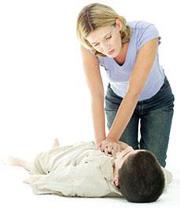5 Reasons Why Fitness Instructors Need to Do a First Aid Course

As a fitness instructor it is vital that you do first aid course so that you are prepared for any eventuality when working with clients. Your clients often seek you out after years – even decades – of poor health and eating choices, and little exercise. They want huge changes and are willing to work for it but they want help and guidance. As a result, you are putting out of shape people through physically intense situations.
Whether you’re in the gym or training in the park, you never know what can happen at any given moment. Accidents can and will occur. Even though you know to start off slowly with your clients, you never know when a small accident can turn into a major injury or if – and when – a client could succumb to a major complication like a heart attack. So it pays to be prepared for all emergencies.
CHECK OUT OUR FIRST AID VIDEOS
- Being a Qualified Fitness Instructor Is Not Enough
If an accident occurs, of course you can call an ambulance. However, no ambulance can ever arrive instantaneously on scene. In fact, response times can be between 7 and 13 minutes which is a long time depending on the emergency you have on hand. Every second can be vital in a medical emergency and, as a trainer, you may be the highest trained person on hand to help. The treatment and aid you can give in those vital seconds and minutes can make all the difference. As a result, it is recommended that fitness instructors not only have first aid training but that they also have CPR training included in their first aid course.
Some fitness centres are equipped with AEDs (automated external defibrillators). If the centre you work for or work at is equipped with these, having training in AED is also extremely worthwhile as both CPR and AED can literally save lives. The reality is you never know when someone might experience a life-threatening emergency before, during or after exercising with you. Even an individual who looks fit and health might have an underlying health condition – that they don’t even know about – that can lead to something as dangerous as a heart attack or cardiac arrest. Being prepared for an emergency is far better than being helpless.
- Not Everyone Can Apply First Aid
Not everyone at the scene of an accident or medical emergency can apply first aid. Aside from lacking the necessary training, some people may have their own medical conditions that could make the situation life threatening for them, as well, to intervene. Whether you work at a facility, from your own home or in a park, you may be the only one on scene who has the ability to step in and provide the necessary first aid at a time of crisis. Here are some interesting statistics:
- 383,000 out of hospital sudden cardiac arrests happen a year
- 88% of cardiac arrests happen at home
- Many patients appear health with no known risk factors or heart disease
- Effective bystander CPR can triple a victim’s chance of survival
- Only 32% of cardiac arrest victims get CPR from a bystander
- A quarter of all emergency room visits can be avoided with first aid and a CPR certification
Having the appropriate first aid and CPR training as a fitness instructor is invaluable to you and your clients. Further, remember that you are often working with people who are already in high risk categories for sudden complications and injuries. By being prepared you can not only help them get healthier, but also help should any complications arise.
- You Might Be Liable For Injury
Liability is a pretty horrible word for most fitness instructors and personal trainers. However, if you aren’t keeping your first aid skills up to date then you might be putting yourself at risk. If you own your own gym, coaching set up, boot camp, etc then you legally need to have the right insurance and you need to be first aid certified – or have a member of staff who is and is always onsite during training sessions. If an injury occurs, no matter who was at fault, you will be automatically liable if you’re not going about things legally. Some insurance companies may offer lower rates to those who have undergone – and continue to undergo regular – first aid courses.
Regardless of whether you own your own establishment, you will still need relevant public liability insurance to cover your every day work with clients and businesses. Without the right PT insurance you are leaving yourself wide open to being sued if someone is injured under your care.
Finally, not having completed a first aid course, and keeping your qualifications current, just puts you and your clients at unnecessary risk every time you work out and puts your reputation at risk. So why risk it when first aid courses are so easy to come by?
- First Aid Kits
It is a fantastic idea to have your own personal first aid kit with you on hand. Most gyms and fitness centres will have their own first aid kits but you can’t always rely on them to be appropriately stocked. So supplement them with your own kit. Quality first aid supplies aren’t that expensive and they allow you to quickly treat basic injuries that commonly occur among out of shape clients.
First Aid kits should be checked and replenished (or replaced) each year. Check the expiration dates on medications and ointments, etc. Keep your kit out of harsh temperatures and environments where possible. Keep a notebook with the medications and ointments, with their expirations listed, so you can replace easily as needed.
Pre-packaged First Aid Kits
You can buy pre-packaged first aid kits at most chemists and pharmacies. These are generally well thought out, easy to purchase and neatly packaged. You can generally buy the same items for less, yourself, but they are easy and convenient if your are busy or concerned you might forget an important first aid item when building your first kit.
The Basic First Aid Kit
A basic, or Class A first aid kit should generally contain items that work best for minor injuries like superficial wounds, small burns, mild blunt force trauma, common illnesses, minor sprains and strains, and overexertion.
As a result, a basic first aid kit should include:
- Adhesive bandages
- Adhesive tape
- Antibiotic treatment
- Antiseptic
- Breathing barrier
- Burn dressing
- Burn treatment
- Cold pack
- Eye coverings
- Eye wash
- First aid guide
- Hand sanitizers
- Medical exam gloves
- Roller bandage
- Scissors
- Sterile pads
- Trauma pads
- Triangular bandage
- But I’ve Already Done a First Aid Course
Having all the right equipment on hand is useless if you don’t have the skills to use it. Completing a First aid course is essential for a fitness instructor, as is keeping that training refreshed. As we all know, a skill that goes unpractised can become rusty. In fact, the reason CPR training is recommended to be renewed yearly is due to the fact studies show we simply do not retain our CPR training long enough. Further, there are always advancements in training and in methods of performing both CPR and first aid responses. Further, depending on your workplace, where you freelance, or your insurance contract, you may be required to refresh your first aid and/or CPR course at regular intervals. First aid training allows a PT or fitness instructor to spot the small signs that a client needs to stop a workout before a small issue turns into a medical emergency.
And, finally, remember an accident can happen to anyone. So don’t let your skills get rusty because you never know when the next big emergency is just around the corner.
